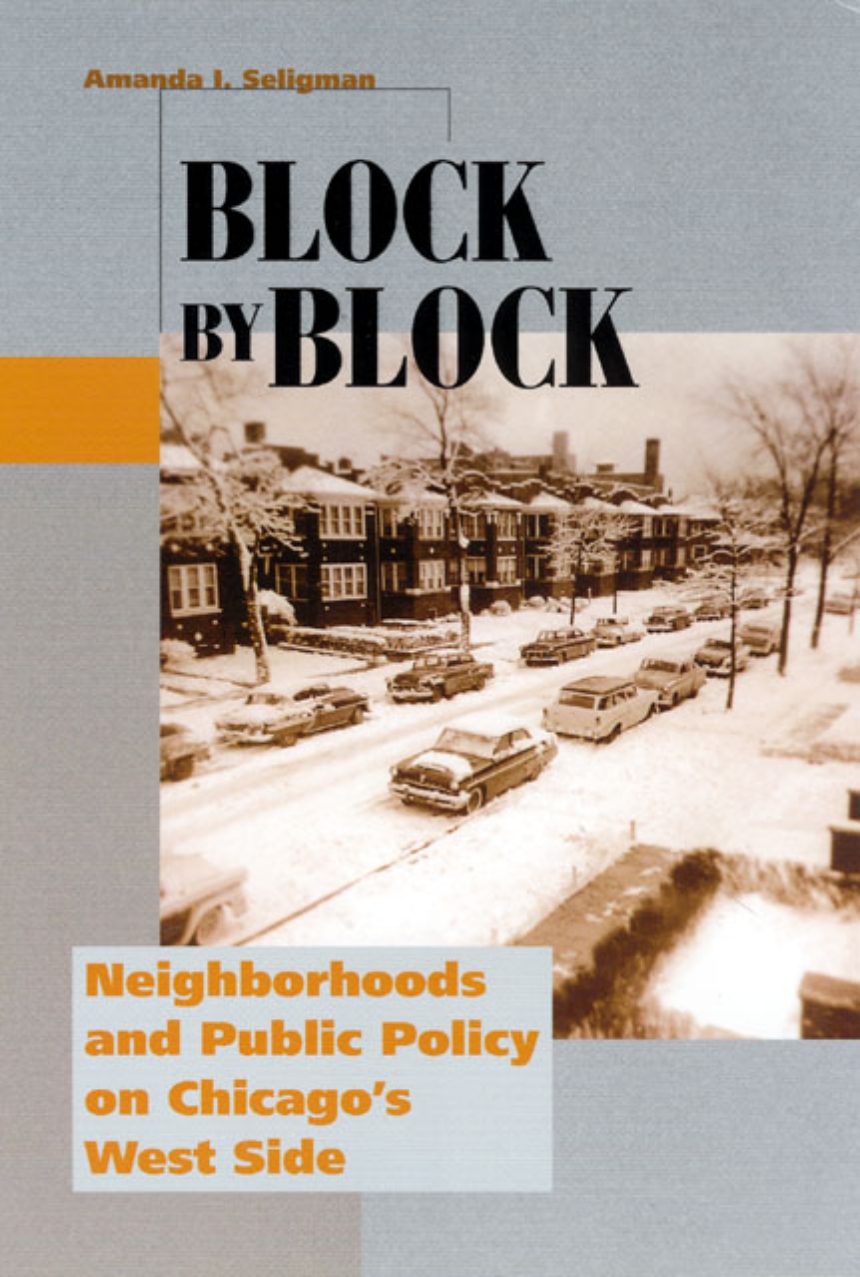Block by Block
Neighborhoods and Public Policy on Chicago’s West Side
In the decades following World War II, cities across the United States saw an influx of African American families into otherwise homogeneously white areas. This racial transformation of urban neighborhoods led many whites to migrate to the suburbs, producing the phenomenon commonly known as white flight. In Block by Block, Amanda I. Seligman draws on the surprisingly understudied West Side communities of Chicago to shed new light on this story of postwar urban America.
Seligman’s study reveals that the responses of white West Siders to racial changes occurring in their neighborhoods were both multifaceted and extensive. She shows that, despite rehabilitation efforts, deterioration in these areas began long before the color of their inhabitants changed from white to black. And ultimately, the riots that erupted on Chicago’s West Side and across the country in the mid-1960s stemmed not only from the tribulations specific to blacks in urban centers but also from the legacy of accumulated neglect after decades of white occupancy. Seligman’s careful and evenhanded account will be essential to understanding that the "flight" of whites to the suburbs was the eventual result of a series of responses to transformations in Chicago’s physical and social landscape, occurring one block at a time.
Seligman’s study reveals that the responses of white West Siders to racial changes occurring in their neighborhoods were both multifaceted and extensive. She shows that, despite rehabilitation efforts, deterioration in these areas began long before the color of their inhabitants changed from white to black. And ultimately, the riots that erupted on Chicago’s West Side and across the country in the mid-1960s stemmed not only from the tribulations specific to blacks in urban centers but also from the legacy of accumulated neglect after decades of white occupancy. Seligman’s careful and evenhanded account will be essential to understanding that the "flight" of whites to the suburbs was the eventual result of a series of responses to transformations in Chicago’s physical and social landscape, occurring one block at a time.
320 pages | 19 halftones, 8 maps, 1 figure | 6 x 9 | © 2005
Historical Studies of Urban America
Education: Education--General Studies
History: Urban History
Reviews
Table of Contents
Acknowledgments
Acronyms in Text
Introduction: Block by Block
1. Chicago’s West Side
2. Housing Codes
3. Conservation and Urban Renewal
4. A Chicago Campus for the University of Illinois
5. Public Schools
6. Blockbusting
7. Keeping African Americans Out
8. Keeping Whites In
Epilogue: Reconsidering White Flight
Acronyms in Notes
Archival Collections
Notes
Index
Acronyms in Text
Introduction: Block by Block
1. Chicago’s West Side
2. Housing Codes
3. Conservation and Urban Renewal
4. A Chicago Campus for the University of Illinois
5. Public Schools
6. Blockbusting
7. Keeping African Americans Out
8. Keeping Whites In
Epilogue: Reconsidering White Flight
Acronyms in Notes
Archival Collections
Notes
Index
